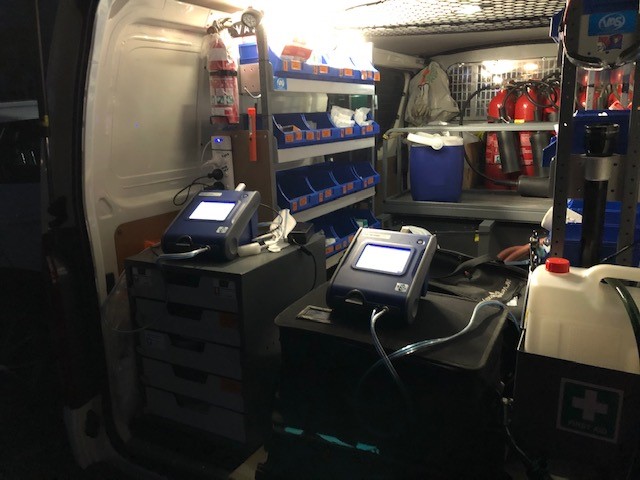Fit Testing Requirements for Respirators

Why do I need to have my respirator fit tested?
Anyone can wear a respirator, but ensuring it fits properly is critical to the respirator actually performing as intended.
Respirators are used to protect the user from hazardous materials including vapours, particles and fumes. Respirator manufacturers invest in a lot of technology to ensure protection against these hazards, but the respirator can only perform this function effectively when the seal against the wearer’s face is air tight.
Everyone’s face is a different size and shape so there is no one size fits all solution. Although the respirator may be sized as small, medium or large, there is fine adjustment that needs to be checked to ensure that the respirator seals properly and any air passes through the filters or cartridges, and not around the mask.
Testing is required for all tight-fitting respirators, including half and full face masks and PAPR or powered air purifying respirators. Workers that are fit tested will achieve higher levels of protection from their respirator, and consequently will stay healthy and productive for longer.
What is the best type of respirator fit testing?
There are two common types of fit tests, known as qualitative and quantitative or QNFT.
Qualitative testing relies on the wearer being able to smell or detect a taste of a particular substance. It is sometimes used for half mask respirators or paper type dust masks. Qualitative testing is highly subjective and can be unreliable, as it relies solely on the individual’s sense of taste or smell.
On the other hand, Quantitative or QNFT testing on the other hand is a more reliable method and is considered the most appropriate for most civil and construction industries. It is the method recommended in the Australian Standard AS/NZS 1715 and is conducted using a digital instrument to measure the passage of air in and around the respirator.
Do I need to prepare anything before a respirator fit test?
There are a few things that respirator wearers need to be aware of before sitting for a fit test. Namely, it’s important to be clean shaven, and not eat, smoke, drink coffee or chew gum for at least an hour prior to the testing.
What happens during a fit test?
Prior to the respirator fit test you will receive an overview of what is involved. Then you will select the respirator to be tested. You will be shown how to don the mask correctly, then asked to don the mask.
The actual test takes under 10 minutes and consists of the following exercises, during which the technician will monitor the air leakage around the mask using an instrument called a Portacount.
This is a small device with tubes attached that monitor air changes when the wearer performs the following:
- Normal Breathing
- Deep Breathing
- Head Side to Side
- Head Up & Down
- Talking
- Grimace
- Bending Over
- Normal Breathing
Each of these exercises lasts for 60 seconds except for the grimace, which is used to break the seal of the mask (after which the participant needs to re-adjust the mask to fit properly again).
The Portacount machine will run the data and produce a numerical value known as a Fit Factor. This indicates whether the particular respirator chosen is a good fit for the individual.
How often does fit testing need to be performed?
A respirator should be fit tested when first issued to the wearer, and at least once a year thereafter (excluding other factors that could require a mask be fit tested earlier). It may also be required if the wearer has undergone significant weight gain or loss or major dental work, both of which could potentially change the profile of their face.
Is a fit check the same as a fit test?
Fit-checking is a quick self-check to ensure the respirator is sitting properly on the face and there is a good seal. Each time a tight-fitting respirator is put on, the wearer should conduct out a fit check on themselves.
A fit-check does not replace the need for a fit test.
How do I conduct a respirator fit check?
There are two ways a respirator user can perform a fit check which should be done each time the wearer puts on the mask. We recommend following the manufacturer’s instructions, but in general, it simply involves breathing in and out.
A positive pressure check involves blocking the exhalation valve with the hands and trying to breathe out. If there is a slight pressure build up, that indicates that there is no air leakage, and the respirator fits well.
Additionally, a negative pressure check should be performed by breathing in with the intake valves blocked by the user’s hands. If it is difficult to breathe in, the respirator fits well.
Any respirators that aren’t up to scratch should not be used. Check with your workplace health and safety officer regarding whether a new mask could be required, or if the filters or cartridges are faulty or need replacing.
Who can perform respirator fit testing in Sydney?
Fit-testing must be carried out by a competent person, manufacturer, supplier or consultant.
Jaybro provides respirator fit testing services in the Sydney metro area, either at your premises or our in Arndell Park. Fit testing is carried out in accordance with Australian Standards AS/NZ 1715:2009 - Selection, Use and Maintenance of Respiratory Protective Equipment.
Our simple online booking system makes it easy to arrange a respirator fit test in Sydney.
 Sign In
Sign In 

